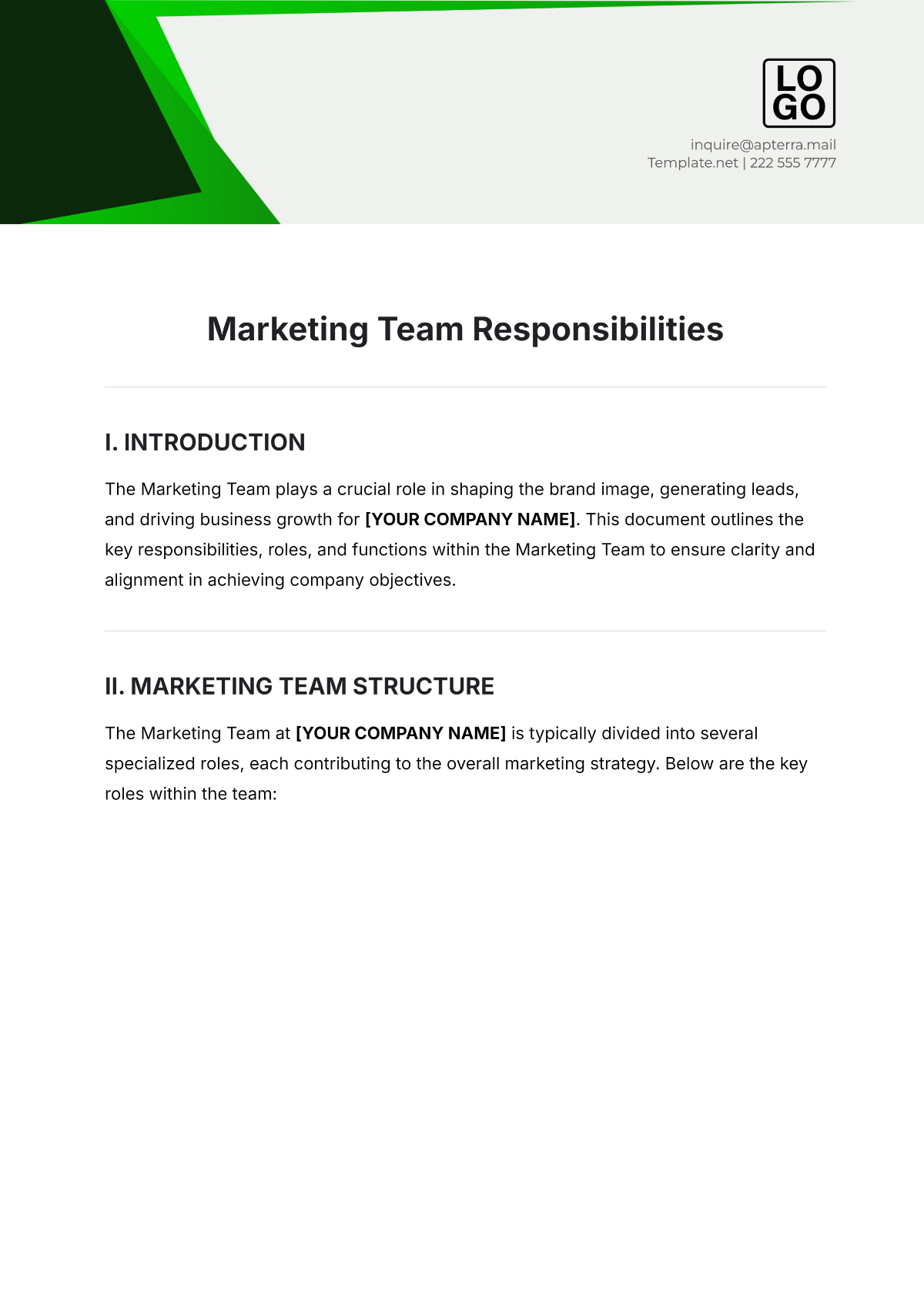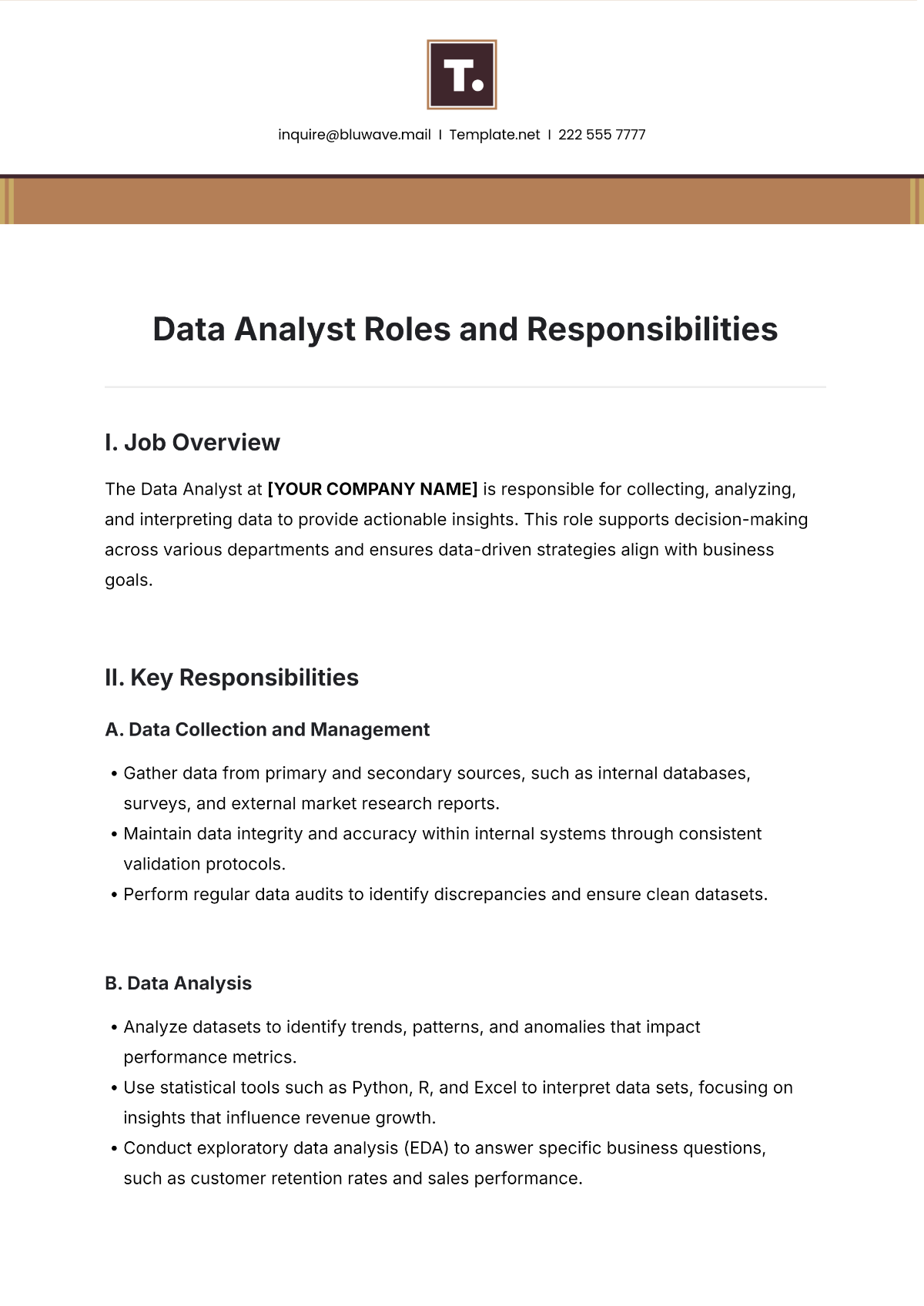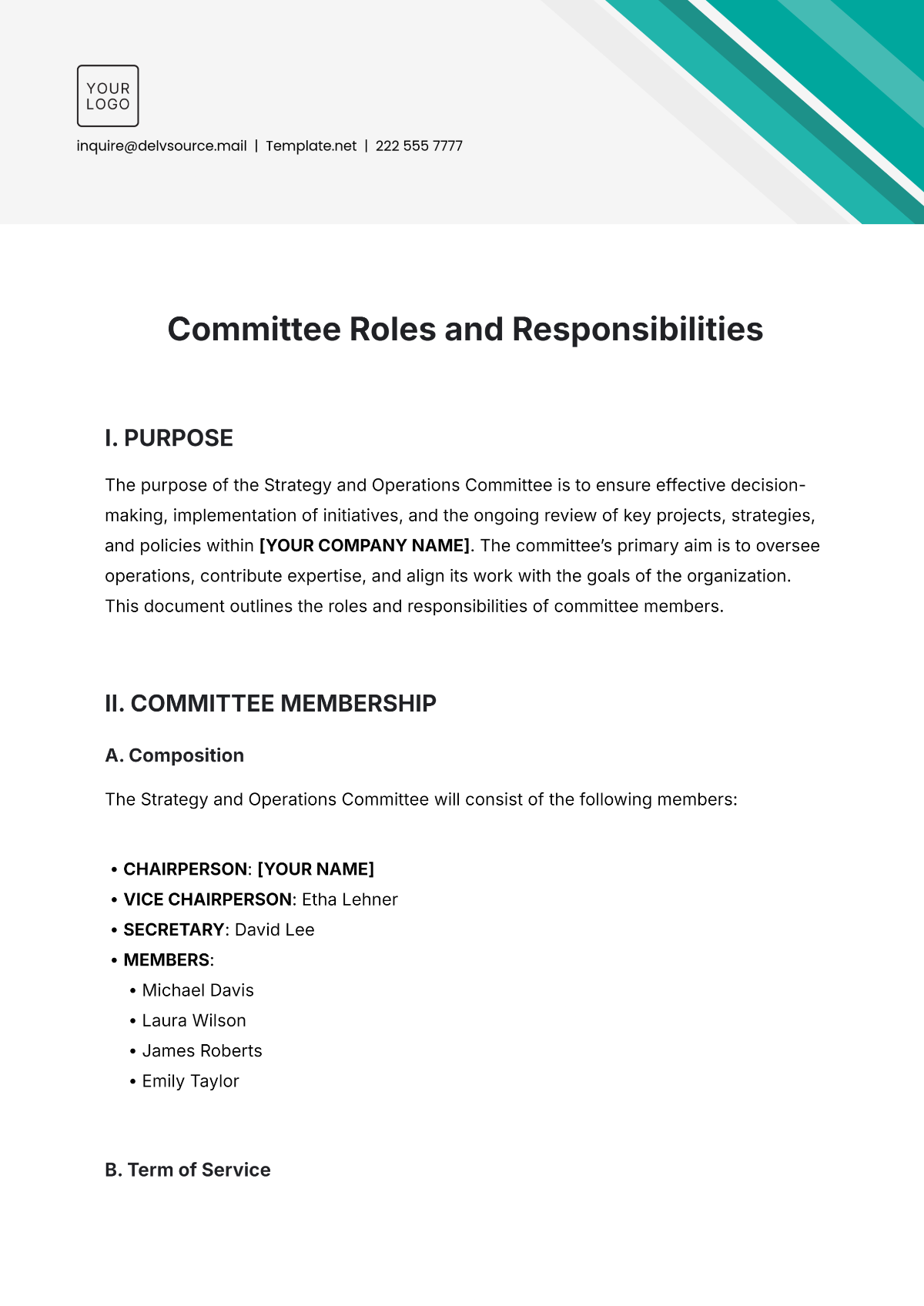IT Team Roles and Responsibilities
I. INTRODUCTION
The IT team at [YOUR COMPANY NAME] is responsible for managing and supporting all technology infrastructure, systems, and applications. This document outlines the various roles and responsibilities within the IT team to ensure smooth operations and efficiency in meeting both the technical and business needs of the organization.
II. IT TEAM STRUCTURE
The IT team at [YOUR COMPANY NAME] is structured to address the various aspects of technology management, ranging from hardware and software to security and network systems. Below are the core roles and their respective responsibilities.
III. ROLES AND RESPONSIBILITIES
1. IT Manager/IT Team Lead
Role Overview: | The IT Manager/Team Lead oversees the entire IT team, ensuring that technology infrastructure is aligned with business objectives. |
|---|---|
Key Responsibilities: |
|
2. Network Administrator
Role Overview: | The Network Administrator is responsible for maintaining the company's network infrastructure, ensuring connectivity, security, and performance. |
|---|---|
Key Responsibilities: |
|
3. Systems Administrator
Role Overview: | The Systems Administrator ensures that servers, workstations, and other technology systems are functioning properly and efficiently. |
|---|---|
Key Responsibilities: |
|
4. IT Support Specialist/Helpdesk Technician
Role Overview: | The IT Support Specialist/Helpdesk Technician provides first-level support to employees, resolving hardware and software issues as needed. |
|---|---|
Key Responsibilities: |
|
5. Cybersecurity Analyst
Role Overview: | The Cybersecurity Analyst is responsible for protecting the company’s information systems from cyber threats and breaches. |
|---|---|
Key Responsibilities: |
|
6. Software Developer/Application Support
Role Overview: | The Software Developer is responsible for designing, developing, and maintaining internal applications and software solutions. |
|---|---|
Key Responsibilities: |
|
7. Database Administrator (DBA)
Role Overview: | The DBA is responsible for managing and maintaining the organization’s databases, ensuring their integrity, security, and availability. |
|---|---|
Key Responsibilities: |
|
IV. COMMUNICATION AND COLLABORATION
The IT team at [YOUR COMPANY NAME] emphasizes open communication and collaboration to effectively address and resolve issues. All members are expected to:
Participate in regular team meetings and discussions.
Communicate effectively with other departments to understand their IT needs.
Document technical processes and procedures to maintain consistency.
V. PERFORMANCE EVALUATION
Each role within the IT team will undergo regular performance evaluations to assess progress, identify challenges, and ensure that responsibilities are being met effectively. The IT Manager will provide feedback, set goals, and review team member performance annually.
VI. CONCLUSION
By clearly defining roles and responsibilities, the IT team at [YOUR COMPANY NAME] ensures that technology systems remain functional, secure, and aligned with business needs. Continued collaboration, professional development, and a proactive approach to problem-solving will help the team succeed.






























